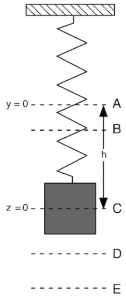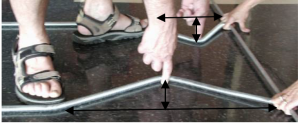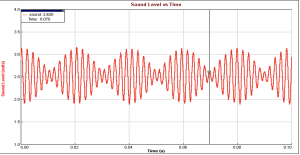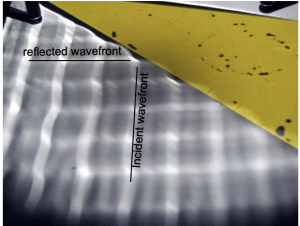Introduction
Students begin the study of waves by developing a model for oscillatory motion; this will be used as a bridge between the previously developed models from mechanics, and future models dealing with mechanical waves.
Sequencing
Unit 1: Oscillating Particle (OP) Model
Students learn to:
- Explore the nature of Simple Harmonic Motion through the development of an oscillating particle (OP) model.
- Explore the kinematic, dynamic and energy properties of an oscillating system.
- Explore the relationship between the period and frequency of oscillation.
- Introduce the concept of transverse displacement of an oscillating system. Show that the models for oscillating particles apply equally well to both transverse and longitudinal oscillations

Unit 2 – Mechanical Waves in One Dimension
In this unit the Oscillating Particle model developed in Unit I will be used to begin the development of a mechanical wave model. Students learn to:
- Illustrate the concept of wave propagation using coupled oscillating particles
- Demonstrate the behavior of wave pulses
- Demonstrate the behavior of transverse pulses in springs interacting with a boundary.
- Examine the interaction of multiple pulses traveling on a spring
- Demonstrate the characteristics of periodic waves

Unit 3 – Longitudinal Waves and Sound
In this unit students describe aspects of sound using a model of longitudinal waves. They learn to:
- Distinguish between transverse and longitudinal waves.
- Measure the speed of sound.
- Describe standing waves on strings and solid bars, in open and closed tubes.
- Relate frequency to pitch, amplitude to loudness, and identify pressure nodes and antinodes
- Describe harmonics and how they add and coexist in musical instruments.
- Describe beats and how they arise.
- Calculate beat frequency.

Unit 4 – Mechanical Waves in Two Dimensions
In this unit students extend the one-dimensional wave pulse to two dimensions using a ripple tank. They learn to:
- Develop representational tools (wave front & ray-wave diagrams) for waves in two dimensions.
- Explore wave behaviors qualitatively in a ripple tank
-
- reflection
- refraction
- diffraction
- interference
- Explore wave behaviors quantitatively using light
-
- reflection
- refraction
- interference
- Develop a quantitative description of interference

Sample Materials
Sample Materials – Coming Soon
Interested in a Physics: Waves Workshop?
Workshops are offered each summer in a variety of locations. Check back often as workshops are always being added.
First-time attendees qualify for a free one-year membership to AMTA. Members have access to ALL instructional resources, webinars, distance learning courses, and other membership services!
If you would like to host a workshop contact: engage@modelinginstruction.org
